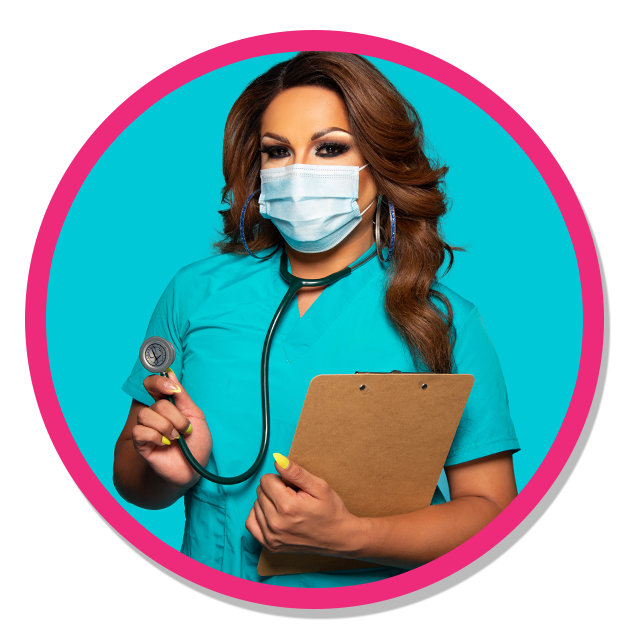
ANAL SEX AND HIV RISK
The risk of getting HIV varies widely depending on the type of sexual activity. Anal sex (intercourse), which involves inserting the penis into the anus, carries the highest risk of transmitting HIV if either partner is HIV-positive.
You can lower your risk for getting and transmitting HIV by using condoms the right way every time you have sex; choosing lower risk sexual activities; taking daily medicine to prevent HIV, called pre-exposure prophylaxis (PrEP); and taking medicines to treat HIV if you have HIV, called antiretroviral therapy (ART).
Risk of HIV
Anal sex is the highest-risk sexual behavior for HIV transmission. Vaginal sex has a lower risk, and activities like oral sex, touching, and kissing carry little to no risk for getting or transmitting HIV. The vast majority of men who get HIV get it through anal sex. However, anal sex is also one of the ways women can get HIV.
Receptive Versus Insertive Sex
During anal sex, the partner inserting the penis is called the insertive partner (or top), and the partner receiving the penis is called the receptive partner (or bottom).
Receptive anal sex is much riskier for getting HIV. The bottom partner is 13 times more likely to get infected than the top. However, it’s possible for either partner to get HIV through anal sex from certain body fluids—blood, semen (cum), pre-seminal fluid (pre-cum), or rectal fluids—of a person who has HIV. Using condoms or medicines to protect against transmission can decrease this risk.
- Being a receptive partner during anal sex is the highest-risk sexual activity for getting HIV. The bottom’s risk of getting HIV is very high because the lining of the rectum is thin and may allow HIV to enter the body during anal sex.
- The insertive partner is also at risk for getting HIV during anal sex. HIV may enter the top partner’s body through the opening at the tip of the penis (or urethra) or through small cuts, scratches, or open sores on the penis.
Risk of Other Infections
In addition to HIV, a person can get other sexually transmitted diseases (STDs) like chlamydia and gonorrhea from anal sex without condoms. Even if a condom is used, some STDs can still be transmitted through skin-to-skin contact (like syphilis or herpes). One can also get hepatitis A, B, and C; parasites like Giardia and intestinal amoebas; and bacteria like Shigella, Salmonella, Campylobacter, and E. coli from anal sex without a condom because they’re transmitted through feces.
Getting tested and treated for STDs reduces a person’s chances of getting or transmitting HIV through anal sex. If one has never had hepatitis A or B, there are vaccines to prevent them. A health care provider can make recommendations about vaccines.
Reducing the Risk
Condoms and Lubrication
Latex or polyurethane male condoms are highly effective in preventing HIV and certain other STDs when used correctly from start to finish for each act of anal sex. People who report using condoms consistently reduced their risk of getting HIV through insertive anal sex with an HIV-positive partner, on average, by 63%, and receptive anal sex with an HIV-positive partner, on average, by 72%. Condoms are much less effective when not used consistently. It is also important that sufficient water- or silicone-based lubricant be used during anal sex to prevent condom breakage and tearing of tissue. Female nitrile condoms can also prevent HIV and some other STDs.
Since condoms are not 100% effective, consider using other prevention methods to further reduce your risk.
PrEP
People who are HIV-negative and at very high risk for HIV can take daily medicine to prevent HIV called pre-exposure prophylaxis (PrEP). If taken daily, PrEP is highly effective for preventing HIV from sex. PrEP is much less effective when it is not taken consistently. Since PrEP does not protect against other STDs, use condoms the right way every time you have sex.
PEP
Post-exposure prophylaxis (PEP) means taking antiretroviral medicines—medicines used to treat HIV—after being potentially exposed to HIV during sex to prevent becoming infected. PEP should be used only in emergency situations and must be started within 72 hours after a possible exposure to HIV, but the sooner the better.
PEP must be taken once or twice daily for 28 days.
When administered correctly, PEP is effective in preventing HIV, but not 100%. To obtain PEP, contact your health care provider, your local or state health department, or go to an emergency room.
ART
For people with HIV, HIV medicine (called antiretroviral therapy or ART) can reduce the amount of virus in the blood and body fluids to very low levels, if taken as prescribed. This is called viral suppression—usually defined as having less than 200 copies of HIV per milliliter of blood. HIV medicine can even make the viral load so low that a test can’t detect it. This is called an undetectable viral load.
People who take HIV medicine as prescribed and get and stay virally suppressed or undetectable can stay healthy for many years, and they have effectively no risk of transmitting HIV to an HIV-negative partner through sex. Only condoms can help protect against some other STDs.
Other Ways to Reduce the Risk
People who engage in anal sex can make other behavioral choices to lower their risk of getting or transmitting HIV. These individuals can:
- Choose less risky behaviors like oral sex, which has little to no risk of transmission.
- Get tested and treated for other STDs.
This page gives effectiveness estimates for the prevention options above.












